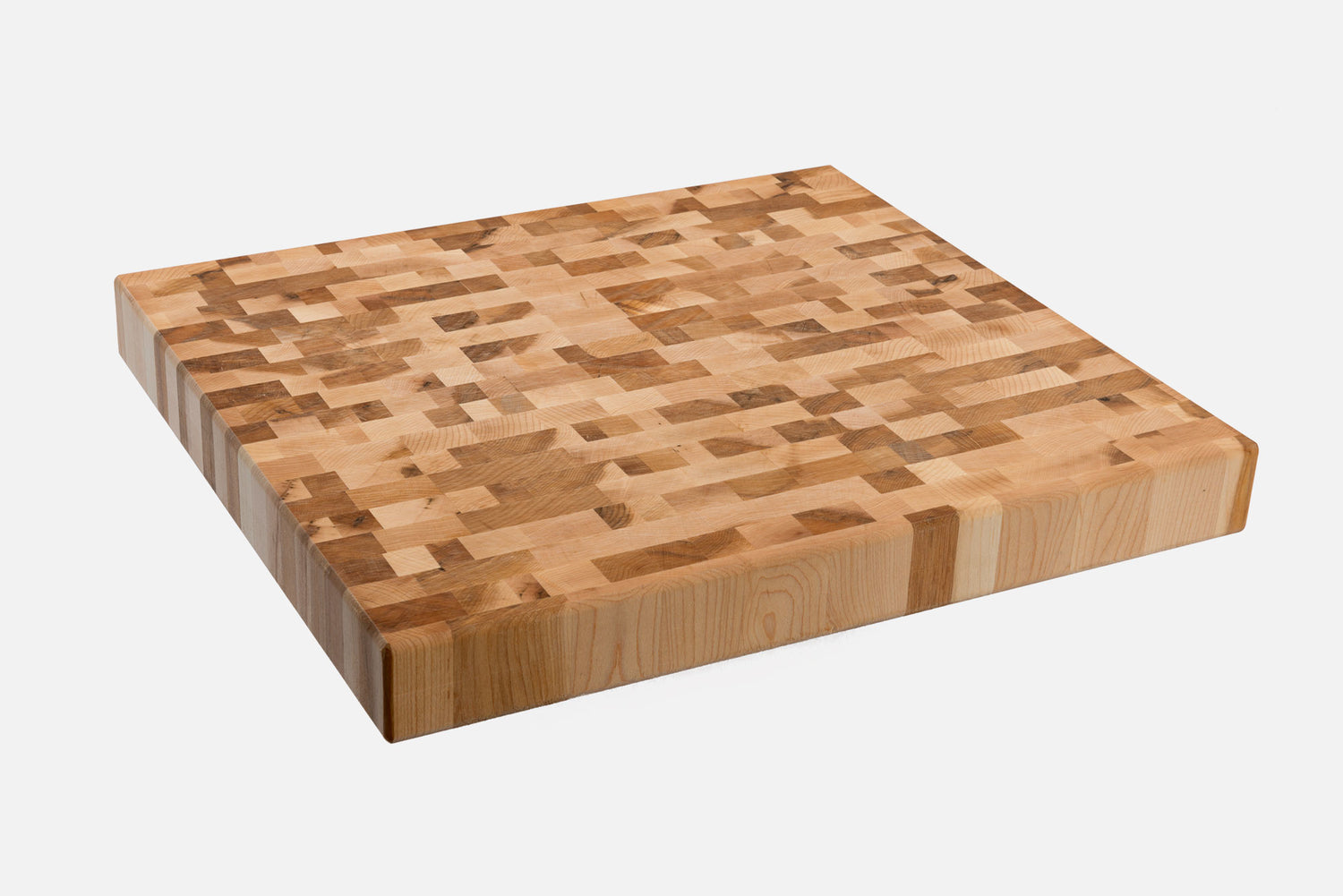Caring for cutting boards

Care
When the board no longer feels waterproof, apply heavy mineral oil using a brush (always keep a brush in a cup with mineral oil ready for use). Leave the oil to penetrate until the board is saturated (e.g. overnight). Remove excess with a dry cloth. Over the years, the wood will require slightly less maintenance. A drop of water should always run down the board. To remove superficial knife marks or stains, sand the wood with 220-grit fine sandpaper and then with 400 or 600-grit. Deep marks can be difficult to remove. End grain wood is difficult to sand. To avoid deep marks, don't use serrated knives on your board. Their points can be particularly aggressive. Instead, use a breadboard designed for this purpose, or a laminated wooden board dedicated to this purpose.

About Labell cutting boards
These boards are industrially manufactured in Montérégie, Quebec, which explains the relatively low price for this extremely durable item.
These boards require initial oiling, as they have not been factory-treated with oil. A large cutting board can initially hold almost an entire bottle of oil. As it becomes saturated, it will need less and less. This type of board, properly maintained, will last you a very long time, even your whole life!
They're built to a very precise specification, but their finish can be perfected. If you wish, you can further refine it at with fine sandpaper (e.g. 220 - 600). You can then apply mineral oil and sand again.
-
HYGIENE
After use, wash the surface with a mixture of soapy water and vinegar. Wipe clean with a cloth.
Never immerse the board in water, and do not put it in the dishwasher. -
BEWARE OF TEMPERATURE VARIATIONS
Avoid placing hot dishes on the wood, this could leave black rings and even cause the board to split.
Keep the board out of direct sunlight to avoid temperature variations.
Why end grain?
End grain wood is a knife's best friend! The wood fibers are positioned vertically, allowing the knife's edge to slip between them. That's why these boards feel a little like cutting on a block of wax. What's more, the marks left by the knives are very superficial and hardly visible even after many years when the board has been well oiled. After sharpening, boards are probably the most important factor in dulling the cutting edge of knives. Butt-wood boards minimize this wear.
From a hygienic point of view, it seems that these boards are particularly hygienic if they are well maintained. The results of a University of Wisconsin study conducted by Dean O. Cliver, published in the Journal of Food Protection in 1994, at least support this view. It seems that these boards, with their shallower marks than polypropylene boards, leave less room for bacteria to proliferate. That's why it's so important to regularly plane polypropylene boards in restaurants, to prevent bacteria from lodging in the countless grooves created by knife edges. It seems that when these boards are poorly maintained, not even the dishwasher can eliminate them completely.
What's more, the same study shows that wood has natural antiseptic properties that help limit the proliferation of bacteria.











